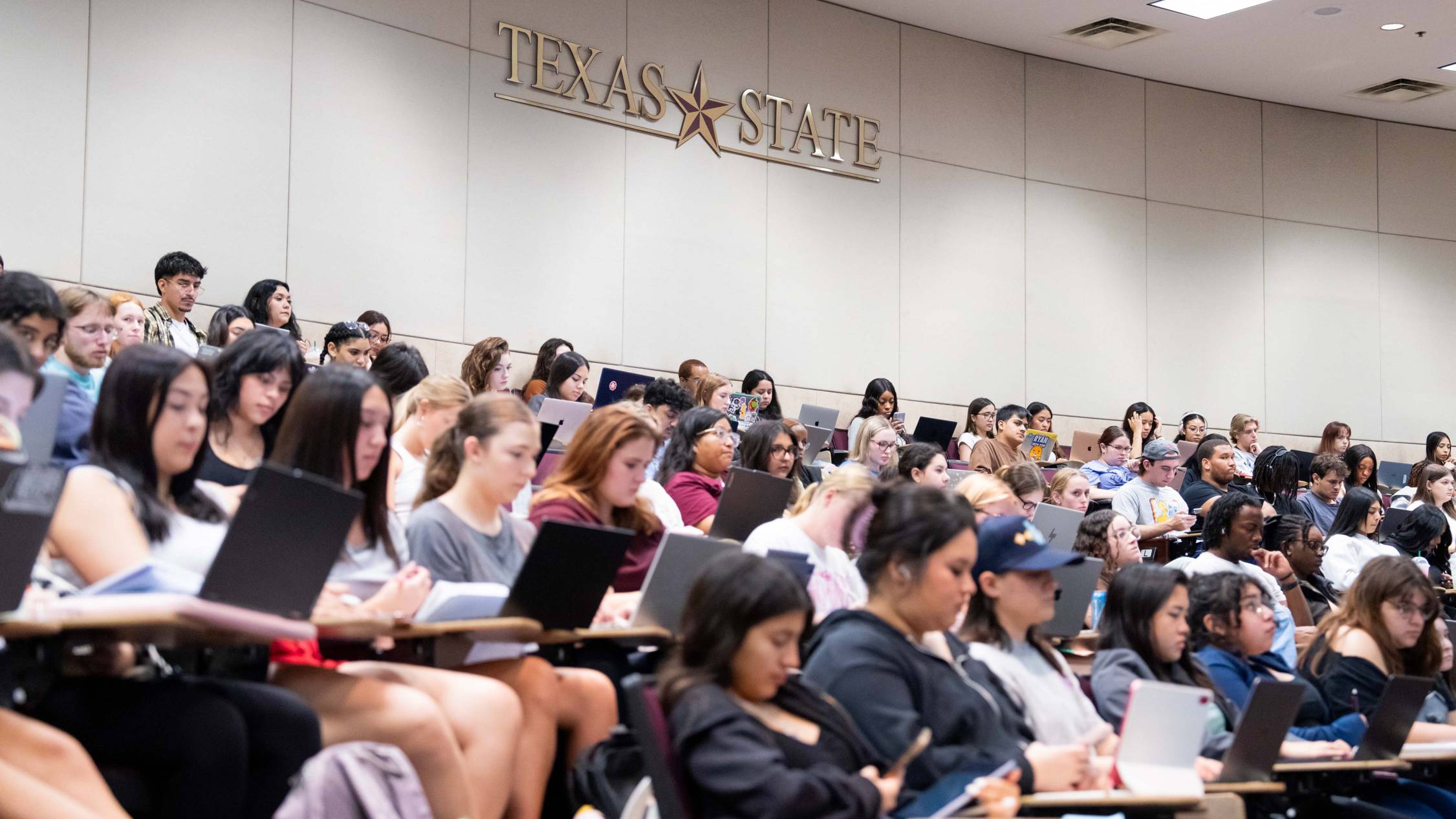In December 2023, the Presidential Commission for Student Success at Texas State University recommended an academic recovery program to help students not in good academic standing get back on track for graduation.
Jason O’Brien, assistant director for Academic Engagement, and his team used data from fall 2023 and spring 2024 to assess what successful students were doing to bounce back to good academic standing. The team also looked at peer institutions to see how many points of contact were required per semester for those students. Later that year in August, Bobcats Bounce Back (B3) was launched.
“We decided not to use the words ‘academic recovery’ because it has some connotations to it and didn’t quite capture what the program is about,” O’Brien said. “I ran around the Quad getting students to vote on my iPad, and Bobcats Bounce Back was the clear favorite.”
Since at least 2009, TXST has required students who fall below a 2.00 GPA to meet with an academic advisor once a semester, which counts as one point of contact. During his research, O’Brien found that students who are on a high academic trajectory are using support services at least once every four weeks, which counts as four points of contact during that semester.
“Part of the philosophy of B3 is that students need to be resilient,” he said. “They need to bounce back from experiencing academic adversity and manage what may be going on in their lives. Simultaneously, we should proactively offer support instead of waiting for students to realize they need it.”
After the research period, his team concluded that four points of contact in a semester is a quality signal that students are on the road to good academic standing. These engagements can include academic advising, success coaching, tutoring, B3 webinars, and more, followed by a check-in conversation with a B3 staff member. This system was created to avoid using a one-size-fits all solution and to ensure the program can adapt to emerging support needs.
“My goal for students is that they recognize their personal assets, strengths, and ability to be academically resilient as they navigate returning to good academic standing,” he said. “I want them to know that Texas State cares about them and their success and will do whatever we need to do to help them achieve their goals.”
Once a student drops below good academic standing, they receive a letter from their college that explains the academic standing policy. A B3 representative will then contact the student two days later to normalize their experience and to offer support.
One student who participated in the B3 program is Mia Lockhart, a sophomore criminal justice major. Once she heard she was going to be placed in the program, she felt scared of the situation.
“I thought, ‘Are they going to contact my parents?’” Lockhart said. “I’m the first one in my family to go to college, so I didn’t want to let them down. Now that I’m out of the program, I felt like I achieved the biggest accomplishment because no one gave up on me — not Jason, not my success coach, and none of my professors.”
She treated the program like she was receiving study plans to follow to get back to good academic standing. One aspect of the program she particularly liked were the workshops with small groups of students.
